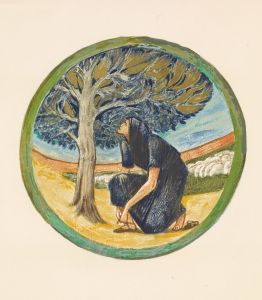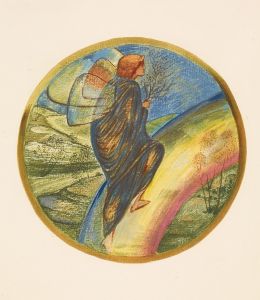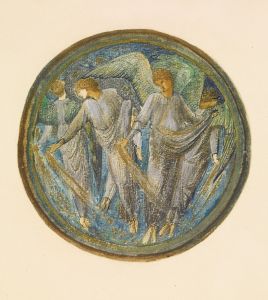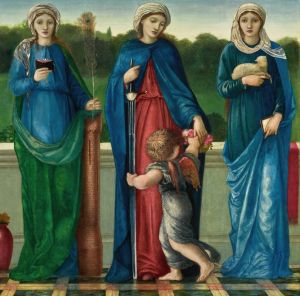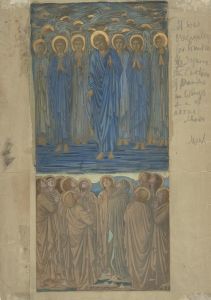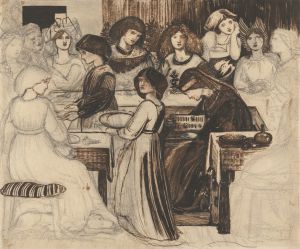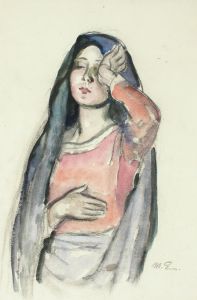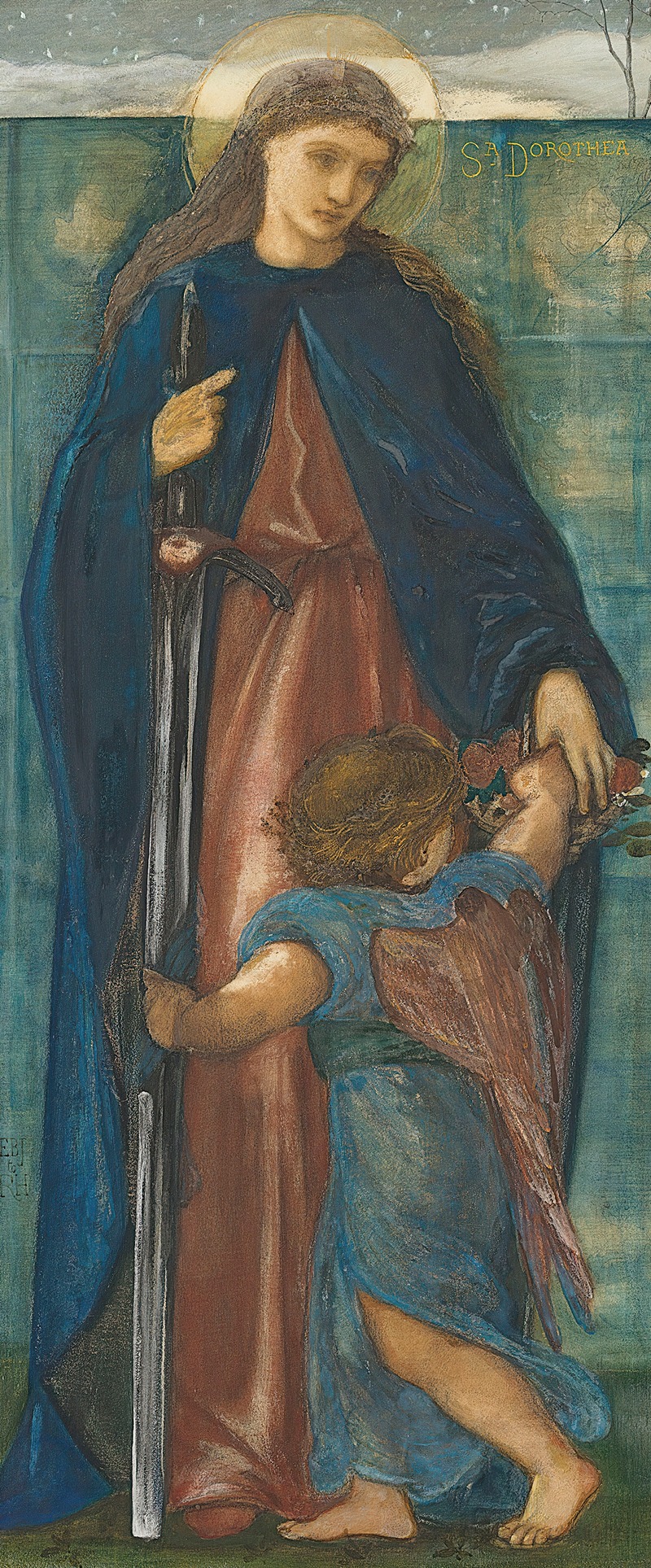
St Dorothy
A hand-painted replica of Sir Edward Coley Burne-Jones’s masterpiece St Dorothy, meticulously crafted by professional artists to capture the true essence of the original. Each piece is created with museum-quality canvas and rare mineral pigments, carefully painted by experienced artists with delicate brushstrokes and rich, layered colors to perfectly recreate the texture of the original artwork. Unlike machine-printed reproductions, this hand-painted version brings the painting to life, infused with the artist’s emotions and skill in every stroke. Whether for personal collection or home decoration, it instantly elevates the artistic atmosphere of any space.
Sir Edward Coley Burne-Jones was a prominent British artist and designer associated with the later phase of the Pre-Raphaelite movement. His work is known for its romantic and mythical themes, often drawing on medieval and classical sources. One of his lesser-known works is "St Dorothy," which exemplifies his distinctive style and thematic interests.
"St Dorothy" is a painting that reflects Burne-Jones's fascination with religious and mythological subjects. St. Dorothy, or Dorothea of Caesarea, is a Christian martyr who is venerated as a saint. According to legend, she was martyred during the Diocletianic Persecution in the early 4th century. Her story is one of faith and miraculous events, as she is said to have sent a basket of roses and apples from heaven to Theophilus, a scribe who mocked her faith, after her execution.
Burne-Jones's depiction of St. Dorothy is consistent with his broader artistic approach, which often involved a blend of realism and idealism. His works are characterized by their intricate detail, rich color palettes, and a sense of ethereal beauty. In "St Dorothy," these elements come together to create a serene and contemplative image that captures the saint's purity and spiritual strength.
The painting likely features Burne-Jones's typical use of elongated figures and a dreamlike atmosphere, which are hallmarks of his style. His attention to detail and use of symbolism would have been employed to convey the saint's story and virtues. The inclusion of roses and apples, significant to St. Dorothy's legend, would serve as key symbolic elements within the composition.
Burne-Jones was known for his collaborative work with other artists and craftsmen, particularly in the context of the Arts and Crafts Movement. He often worked with William Morris, a close friend and collaborator, on various projects, including stained glass windows and tapestries. While "St Dorothy" is a standalone painting, it reflects the broader aesthetic principles of the movement, which emphasized craftsmanship, beauty, and the integration of art into everyday life.
The painting of "St Dorothy" would have been created during a period when Burne-Jones was exploring themes of spirituality and the divine, often drawing inspiration from religious texts and legends. His work during this time was marked by a deep interest in the intersection of the earthly and the heavenly, a theme that resonates in the story of St. Dorothy.
As with many of Burne-Jones's works, "St Dorothy" would have been intended not just as a visual representation of a saint, but as an exploration of the themes of faith, sacrifice, and redemption. His ability to convey complex emotions and narratives through his art is one of the reasons he remains a significant figure in the history of British art.
While specific details about the painting "St Dorothy" by Burne-Jones may not be widely documented, the artist's broader body of work provides context for understanding his approach to such subjects. His legacy is one of beauty, imagination, and a profound engagement with the spiritual and mythical dimensions of human experience.






